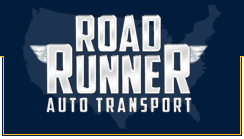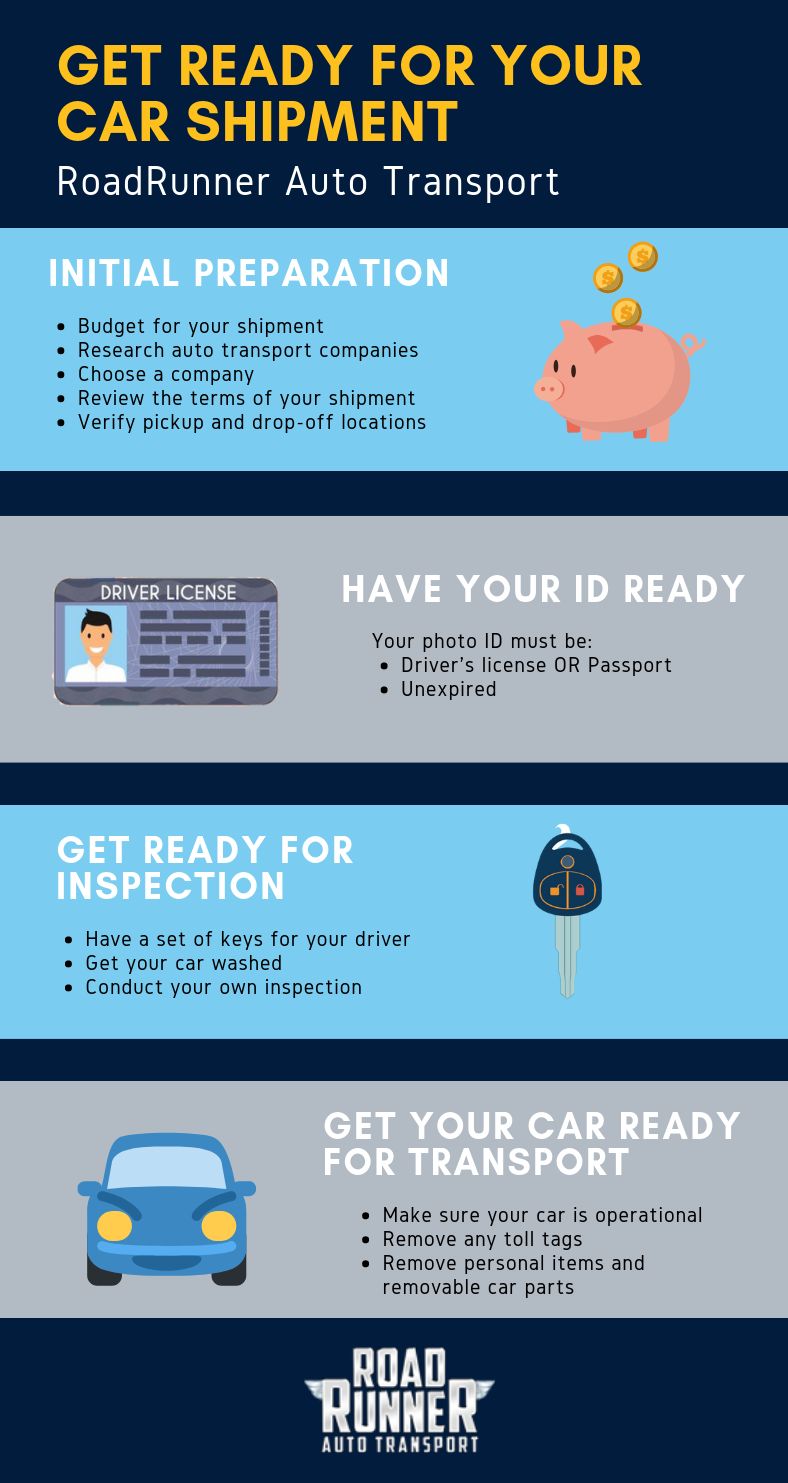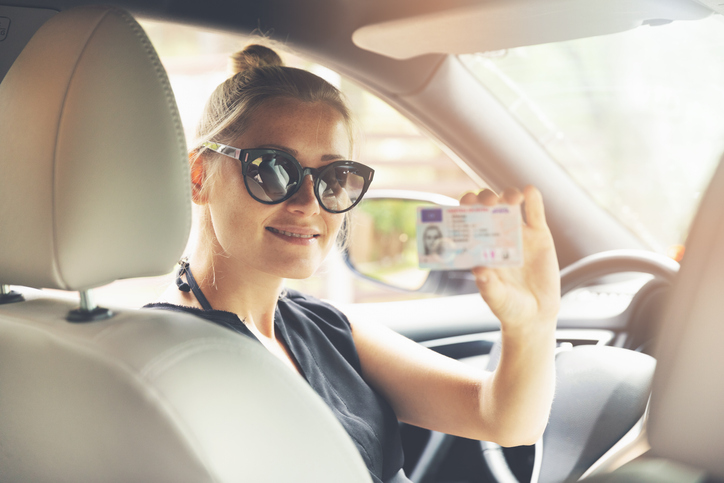
The trusted name in vehicle shipping for over 30 years!
- Track a Shipment
- Dealer Login
- Carrier Login
Speak with a shipping expert
(888) 777-2123

The Complete Car Shipping Checklist
Posted on 05/30/2019
Shipping your car
Initial preparation
Have your ID ready
Get ready for inspection
Get your car ready for transport
After Shipping
I’m ready to ship my car

Shipping your car
Whether you’re moving or just coming back from a vacation or trip, one of the best things you can do is to ship your car. This will not only save you time but it will practically pay for itself as far as the cost you will save in terms of lodging and gas.
However, shipping your car is a daunting task for some people and many don’t know where to start their preparations. When shipping a car, namely for the first time, it’s easy to get lost in the details. RoadRunner Auto Transport has put together this checklist for you so that your car shipment can go as smoothly as possible.
Initial preparation
-
- First, you will want to make sure you have the proper budget for your auto shipment. You should make sure that you have at least $1000. Depending on your particular shipment, your cost might actually be over a thousand dollars, so, be prepared to have the money to pay the bill. For example, shipping an average car from New York to San Francisco will cost between $1300 and $1500 depending on several variables.
-
- Next, you’ll need to figure out which method of car transportation that you’ll need to use. There are several options to consider: open transport, enclosed transport, and top load are the biggest considerations to mull over.
-
-
- Open transport is the most common type of auto transport. This is the type of transport you will see driving down the highway – a truck with two levels and a bunch of cars on each. Top load is the “upper deck” of the truck carrier. The benefit with the top load is that there are no cars above you which can, potentially, be problematic if one of them has a fluid leak. It also prevents small scratches from rocks on the road.
-
-
-
- Enclosed auto transport is essentially a regular looking 18-wheeler with a couple of cars in the back rather than a typical load. The benefits for enclosed transport are numerous. It completely circumvents the possibility of any road debris hitting your car during transport. It’s also better because there are less cars in the load which allows for more space for your car during the shipment. These options will, however, cost additional fees.
-
-
-
- In the end, any method of transport you use will be safe and insured. It’s up to you to decide what your budget is and what your particular car shipping needs are.
-
-
- Now, you’ll want to carefully research and choose the right auto transport company for your particular shipment. Almost all auto shipping companies will offer a free car shipping quote with a minimum requirement such as your e-mail address. You can use these quotes to gauge which auto transport company is the best option for you.
-
- After you pick your provider you will need to review your Bill of Lading as well as your contract. With nearly all vehicle transport companies the contract is the confirmation email that you receive. When the driver arrives to get your car, he will hand you your copy of the Bill of Lading where he will write down the car’s condition as well as various transportation information. It is imperative that you keep a copy of your Bill of Lading for your records, so you can reference it in the future if need be.
-
- Prior to your shipment you will need to verify the pick-up and drop off locations. If you choose door-to-door service, you’ll need to confirm that the auto transport company has the correct address as well as times.
- You must also make sure that wherever you choose to have your car picked up and/or dropped off that it is possible for the driver to bring his truck to get or drop-off your car. For example, if you live in a town where trucks over a certain weight are prohibited from driving on your road, it is likely that your driver will not be able to drop your vehicle off at your home. Be sure that yourself or someone over the age of 18 will be wherever you choose to have your car dropped off when your car arrives.
Have your ID ready:
Before your car can be loaded onto the auto carrier, you must provide a photo ID of yourself. You can use your driver’s license or passport and they cannot be expired. This is important in order for drivers in the auto transport industry to verify identities which ensures the safety of all the cars being shipped.

Get ready for inspection:<span “get-ready-for-inspection”>
-
- Make sure that you have a set of working keys for your car. The driver will need a set in order to drive the car on and off of the carrier.
-
- The next step in order to get ready for inspection will be to get your car thoroughly washed. This will enable the driver to conduct their inspection without any difficulty and will benefit you as it will save time. It will also ensure that any damage incurred during transport will be noted as such. Don’t worry about cleaning the interior of your car too much because you will likely need to do so after your car is delivered anyway.
- Next you will want to make sure that you conduct your own inspection before the actual inspection takes place. Be sure to take pictures of the car to have as reference after your car ships just in case any damage occurs during the transport. Make sure you have dates imprinted on these photos as well, so the validity of the pictures can not be disputed later on. You should have no issues being able to prove cell phone pictures were taken on a certain date. Be sure that the pictures of the vehicle are of both the exterior and interior.
Get your car ready for transport:
-
- The first thing you will want to do in order to get ready for transport is to check for any fluid leaks from your car. If there are any you should get them fixed as soon as possible in order to avoid having to pay any damages incurred by someone else’s vehicle as a direct result of those leaks.
-
- The next step is to make sure that your battery is fully charged and is in a secure position in the engine where slight bumps in the road won’t be able to jar the battery lose. If the battery isn’t charged make sure you get a new one or else, you run the risk of an additional fee for your vehicle being “inoperable” which can be pretty steep at times.
-
- Next, make sure that your tires are completely inflated and that there aren’t any leaks. Making sure there aren’t any leaks is particularly important because if you are shipping your car a long distance and your car will be on the truck for ten days, the tire could easily flatten in that period causing issues getting your car off the hauler during delivery.
-
- Check and make sure that your emergency brake is working properly. You don’t want even the slightest possibility of your car rolling of the truck.
-
- Next, you will want to remove any removable parts like roof racks. You will also want to retract your antenna if at all possible, otherwise they could be damaged and/or end up broken.
-
- Then, you will want to protect the non-removable exterior parts such as side-view mirrors or spoilers by covering them securely in bubble wrapping. This will help prevent these parts from being damaged from things such as small rocks from the road.
-
- Now, an extremely important step, will be to remove any personal items of value such as jewelry or electronics. If these are lost, stolen or damaged during transport, they will not be covered by the insurance. The longer the transport the higher the risk will be that personal items get damaged or stolen – don’t let it happen and remove them prior to transport.
-
- This goes without saying, but, be sure not to have any hazardous materials inside of your car as well.
-
- You will want to make sure that your alarm system isn’t particularly sensitive. You should disable it if possible. If your alarm starts going off during transport and the driver can’t disable it easily, they will be forced to disconnect your battery.
-
- If your vehicle happens to be a convertible make sure that the top is up and secure. You definitely don’t want the top open during a long-distance transportation as you would be risking damage to your interior.
-
- Make sure any toll tags are deactivated or removed before your car ships. You don’t want the unnecessary charges for tolls being charged to your account.
-
- Make sure that your regular auto insurance will still be current during your shipment just in case your driver is in an accident and your car ends up being damaged.
-
- Make note of your car’s odometer number. This should not increase by more than a mile unless there was an unauthorized joy ride during the shipment. (This is not something you ever really need to worry about but better be safe than sorry.)
- If you’re aware of any issues with the car such as a problem shifting gears – make sure you tell the driver about them as well as giving them instructions to be able to navigate around the issue. There shouldn’t be any outlandish things for the driver to do in order to simply get your car on and off of the truck.

After Shipping:
-
- Be sure to clean your car thoroughly. During transport, your driver will be in and out of your car a few times. This can end up leaving your car with some dirt in it. You should always remove any dirt from your car as soon as possible, whether shipping your car or not, as a best practice for car up-keep.
-
- If you are re-locating to a different state permanently, you will now need to register your vehicle with the new state and get new license plates. You will need to visit your local Department of Motor Vehicles in order to do so.
-
- Finally, be sure to take your car in to be serviced. Bumps in the road during your transport could, possibly, knock something loose, like your battery cables for example. You want to make sure everything is in proper working order as soon as your car gets to where it’s going to be.
- Once you are done celebrating and your car has been successfully shipped you can assess how your experience went. Based on this you can do a few things: You can choose to or not to ship with that same company again in the future, write an online review on sites like Google or Facebook, and/or you can pursue any damage restitution for anything that might have happened to your car during the shipment.
I’m ready to ship my car
Now that you’ve gone through this lengthy auto shipping checklist, you are ready to ship your car. You can get that process going with a free quote from RoadRunner Auto Transport. Once you get your quote, you’ll be able to decide which options are best for you then book your shipment.
Instant Car Shipping Quote
Calculate your car shipping rate in 3 easy steps!
The Complete Car Shipping Checklist
Posted on 05/30/2019
Shipping your car
Initial preparation
Have your ID ready
Get ready for inspection
Get your car ready for transport
After Shipping
I’m ready to ship my car

Shipping your car
Whether you’re moving or just coming back from a vacation or trip, one of the best things you can do is to ship your car. This will not only save you time but it will practically pay for itself as far as the cost you will save in terms of lodging and gas.
However, shipping your car is a daunting task for some people and many don’t know where to start their preparations. When shipping a car, namely for the first time, it’s easy to get lost in the details. RoadRunner Auto Transport has put together this checklist for you so that your car shipment can go as smoothly as possible.
Initial preparation
-
- First, you will want to make sure you have the proper budget for your auto shipment. You should make sure that you have at least $1000. Depending on your particular shipment, your cost might actually be over a thousand dollars, so, be prepared to have the money to pay the bill. For example, shipping an average car from New York to San Francisco will cost between $1300 and $1500 depending on several variables.
-
- Next, you’ll need to figure out which method of car transportation that you’ll need to use. There are several options to consider: open transport, enclosed transport, and top load are the biggest considerations to mull over.
-
-
- Open transport is the most common type of auto transport. This is the type of transport you will see driving down the highway – a truck with two levels and a bunch of cars on each. Top load is the “upper deck” of the truck carrier. The benefit with the top load is that there are no cars above you which can, potentially, be problematic if one of them has a fluid leak. It also prevents small scratches from rocks on the road.
-
-
-
- Enclosed auto transport is essentially a regular looking 18-wheeler with a couple of cars in the back rather than a typical load. The benefits for enclosed transport are numerous. It completely circumvents the possibility of any road debris hitting your car during transport. It’s also better because there are less cars in the load which allows for more space for your car during the shipment. These options will, however, cost additional fees.
-
-
-
- In the end, any method of transport you use will be safe and insured. It’s up to you to decide what your budget is and what your particular car shipping needs are.
-
-
- Now, you’ll want to carefully research and choose the right auto transport company for your particular shipment. Almost all auto shipping companies will offer a free car shipping quote with a minimum requirement such as your e-mail address. You can use these quotes to gauge which auto transport company is the best option for you.
-
- After you pick your provider you will need to review your Bill of Lading as well as your contract. With nearly all vehicle transport companies the contract is the confirmation email that you receive. When the driver arrives to get your car, he will hand you your copy of the Bill of Lading where he will write down the car’s condition as well as various transportation information. It is imperative that you keep a copy of your Bill of Lading for your records, so you can reference it in the future if need be.
-
- Prior to your shipment you will need to verify the pick-up and drop off locations. If you choose door-to-door service, you’ll need to confirm that the auto transport company has the correct address as well as times.
- You must also make sure that wherever you choose to have your car picked up and/or dropped off that it is possible for the driver to bring his truck to get or drop-off your car. For example, if you live in a town where trucks over a certain weight are prohibited from driving on your road, it is likely that your driver will not be able to drop your vehicle off at your home. Be sure that yourself or someone over the age of 18 will be wherever you choose to have your car dropped off when your car arrives.
Have your ID ready:
Before your car can be loaded onto the auto carrier, you must provide a photo ID of yourself. You can use your driver’s license or passport and they cannot be expired. This is important in order for drivers in the auto transport industry to verify identities which ensures the safety of all the cars being shipped.

Get ready for inspection:<span “get-ready-for-inspection”>
-
- Make sure that you have a set of working keys for your car. The driver will need a set in order to drive the car on and off of the carrier.
-
- The next step in order to get ready for inspection will be to get your car thoroughly washed. This will enable the driver to conduct their inspection without any difficulty and will benefit you as it will save time. It will also ensure that any damage incurred during transport will be noted as such. Don’t worry about cleaning the interior of your car too much because you will likely need to do so after your car is delivered anyway.
- Next you will want to make sure that you conduct your own inspection before the actual inspection takes place. Be sure to take pictures of the car to have as reference after your car ships just in case any damage occurs during the transport. Make sure you have dates imprinted on these photos as well, so the validity of the pictures can not be disputed later on. You should have no issues being able to prove cell phone pictures were taken on a certain date. Be sure that the pictures of the vehicle are of both the exterior and interior.
Get your car ready for transport:
-
- The first thing you will want to do in order to get ready for transport is to check for any fluid leaks from your car. If there are any you should get them fixed as soon as possible in order to avoid having to pay any damages incurred by someone else’s vehicle as a direct result of those leaks.
-
- The next step is to make sure that your battery is fully charged and is in a secure position in the engine where slight bumps in the road won’t be able to jar the battery lose. If the battery isn’t charged make sure you get a new one or else, you run the risk of an additional fee for your vehicle being “inoperable” which can be pretty steep at times.
-
- Next, make sure that your tires are completely inflated and that there aren’t any leaks. Making sure there aren’t any leaks is particularly important because if you are shipping your car a long distance and your car will be on the truck for ten days, the tire could easily flatten in that period causing issues getting your car off the hauler during delivery.
-
- Check and make sure that your emergency brake is working properly. You don’t want even the slightest possibility of your car rolling of the truck.
-
- Next, you will want to remove any removable parts like roof racks. You will also want to retract your antenna if at all possible, otherwise they could be damaged and/or end up broken.
-
- Then, you will want to protect the non-removable exterior parts such as side-view mirrors or spoilers by covering them securely in bubble wrapping. This will help prevent these parts from being damaged from things such as small rocks from the road.
-
- Now, an extremely important step, will be to remove any personal items of value such as jewelry or electronics. If these are lost, stolen or damaged during transport, they will not be covered by the insurance. The longer the transport the higher the risk will be that personal items get damaged or stolen – don’t let it happen and remove them prior to transport.
-
- This goes without saying, but, be sure not to have any hazardous materials inside of your car as well.
-
- You will want to make sure that your alarm system isn’t particularly sensitive. You should disable it if possible. If your alarm starts going off during transport and the driver can’t disable it easily, they will be forced to disconnect your battery.
-
- If your vehicle happens to be a convertible make sure that the top is up and secure. You definitely don’t want the top open during a long-distance transportation as you would be risking damage to your interior.
-
- Make sure any toll tags are deactivated or removed before your car ships. You don’t want the unnecessary charges for tolls being charged to your account.
-
- Make sure that your regular auto insurance will still be current during your shipment just in case your driver is in an accident and your car ends up being damaged.
-
- Make note of your car’s odometer number. This should not increase by more than a mile unless there was an unauthorized joy ride during the shipment. (This is not something you ever really need to worry about but better be safe than sorry.)
- If you’re aware of any issues with the car such as a problem shifting gears – make sure you tell the driver about them as well as giving them instructions to be able to navigate around the issue. There shouldn’t be any outlandish things for the driver to do in order to simply get your car on and off of the truck.

After Shipping:
-
- Be sure to clean your car thoroughly. During transport, your driver will be in and out of your car a few times. This can end up leaving your car with some dirt in it. You should always remove any dirt from your car as soon as possible, whether shipping your car or not, as a best practice for car up-keep.
-
- If you are re-locating to a different state permanently, you will now need to register your vehicle with the new state and get new license plates. You will need to visit your local Department of Motor Vehicles in order to do so.
-
- Finally, be sure to take your car in to be serviced. Bumps in the road during your transport could, possibly, knock something loose, like your battery cables for example. You want to make sure everything is in proper working order as soon as your car gets to where it’s going to be.
- Once you are done celebrating and your car has been successfully shipped you can assess how your experience went. Based on this you can do a few things: You can choose to or not to ship with that same company again in the future, write an online review on sites like Google or Facebook, and/or you can pursue any damage restitution for anything that might have happened to your car during the shipment.
I’m ready to ship my car
Now that you’ve gone through this lengthy auto shipping checklist, you are ready to ship your car. You can get that process going with a free quote from RoadRunner Auto Transport. Once you get your quote, you’ll be able to decide which options are best for you then book your shipment.
"Save time looking and just call Roadrunner Auto Transport - they truly helped make my move easier!"
Trish A.
Miami, FL


"When I bought a car out of state I was unsure what to expect with the shipping. RoadRunner made everything so easy!"
Jenna D.
Lufkin, TX


"I called RoadRunner and was able to have my car picked up that same day and delivered over 500 miles away the next day!"
Joan B.
Boston, MA


"We needed 2 cars shipped across the country last minute and RoadRunner really came through big time for us!"
Amanda M.
Los Angeles, CA


Frequently Asked Questions
Get answers to some of the most commonly asked questions about the vehicle transportation process.








